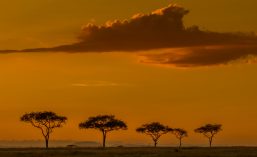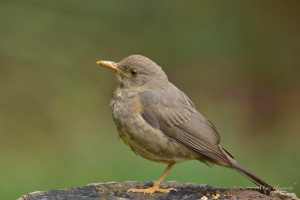So I am working away on my computer producing an equity strategy report, I hear on the radio that Eskom will start load shedding. I try to get onto Eskon’s website to see the load shedding schedule – can’t get in – overloaded. The next minute the electrical power is cut off. No electrical power for four and half hours courtesy power electrical utility Eskom ably assisted by our municipality……… It is the end of the first week in March and the start of our autumn. I expect to be doing a lot of photography out of my office window this winter. Eskom’s latest load shedding is the early signal of their desperately tight supply and demand balance.
“A pessimist sees the difficulty in every opportunity; an optimist sees the opportunity in every difficulty.”
― Winston Churchill
So what does a investment strategist, who is passionate about photography, do when the electrical power utility cuts off his electrical power? He does what comes naturally, sits still quietly in front of his camera and points it out of the open french doors in his office and waits and watches for nature to reveal herself. I am fortunate enough to have my office at home. I look out onto my garden which is bordered on the east boundary by the Outspan Bird Sanctuary which has a grove of popular trees with a stream flowing through it.
While waiting, I could hear the European Bee-eaters flying about 30 metres above me. I love the sound they make. It is a very distinctive summer sound early in the morning or evening. Other summer sounds in this area are the calls of the Red Chested, Didericks and Klaas’s Cuckoos. Very seldom seen but often heard. Well they have all gone and started their northward migration. This is a sure sign that autumn is upon us and I am sure the European Bee-eaters are not far behind.
Fortunately, gardens in this ‘neck of the woods’ attract many birds which do not migrate. The specialist aerial insectivores tend to move north as the insect activity reduces in winter, but there is so much food in the urban areas that we still find a remarkable diversity of birdlife, even in winter. I have included some images taken while waiting peacefully for the electrical power to be turned on again.
We see the Red-eyed, Cape Turtle and Laughing Doves in the garden, all of which are seed eaters. They tend to fly to a branch close to where they want to feed, check to see if it is safe then fly down onto the ground to start foraging for seeds.
The Laughing Dove is exquisitely coloured in pastel soft pinks, salmons and bluey-greys. They are so common that we tend not to stop and admire their soft beautiful colouring.
We also see the African Olive-Pigeon ( previously the Rameron Pigeon) and the Rock (previously called Feral) Pigeon in the garden. The Olive Pigeon is a fruit eater. Pigeons are larger than Doves; they are also mainly fruit eaters and tend to remain in the trees rather than on the ground like Doves.
A few years ago, we had a dry summer and many Cape Glossy Starlings came into the urban areas looking for food, With all of the available food in the urban areas, they found it so good and stayed.
“It still holds true that man is most uniquely human when he turns obstacles into opportunities”.
― Eric Hoffer
My least favourite garden birds – hmmm a toss up between Mynas or Hadedas. We have two Myna families living on the property. These are my least favourite birds in the garden. Although striking in colour, they are aggressive and wary. I believe they were introduced into South Africa via Durban from India and East Asia toward the end of the nineteenth century. They have since thrived throughout South Africa. The Mynas chase the Thrushes, Weavers, Robins and Starlings away but they don’t mess with the Barbets.
The Hadedas are just very noisy, they use their bush telegraph at any time of the night and day. They are good excavators in the garden with those long beaks. They seem to excavate more earthworms than ‘Parktown prawns’ – yes those crickets which look like they want to go for you than jump away.
We have numerous Olive Thrushes in the garden. They are insect and worm eaters feeding mostly on the ground but also lurk in the bushes and undergrowth. The next two images are of a juvenile Olive Thrush. They are also partial to fruit but have strong competition from the `Barbets, Bulbuls and Mynas.
The distinctive orange beak and legs of an adult Olive Thrush.
“It is not often that a man can make opportunities for himself. But he can put himself in such shape that when or if the opportunities come he is ready.”
― Theodore Roosevelt
We have two types of Barbets in the garden, the Crested and Black -collared. The Crested are ever present but the Black-collared although often heard singing their duet are not often seen.
Being someone is fascinated with colour. I am always amazed at the colour combinations mother nature puts on show. The Crested Barbet is exquisitely coloured with black, white and yellow with flashes of red.
In South Africa, we get Bulbuls, Greenbuls and Brownbuls. There are three types of Bulbuls, and each has a different coloured eye-ring, the Black-eyed, Red-eyed and Cape (which has a white eye ring). We only get the Black-eyed in our area and plenty of them. These noisy fruit and insect eaters will always let you know when they see a threat, be it a Goshawk, Coucal, or snake. It is interesting to see the hierarchy when it comes to feeding. The Bulbuls are lower than the Barbets, Mynas and Starlings.
I was fortunate enough to see a hard working mother feeding her chick or should I say adult sized fledgling.
Early in the morning and last thing in the evening you will hear the Cape Robin-Chat singing away. It sings with real joy. These little Robin-Chats will, together with Oliver Thrushes, accompany you when you are gardening, just waiting for your to turn the flowerbeds and reveal some earthworms or insects.
The seasons are changing around here and with it the mix of birds.
“How would your life be different if…You didn’t allow yourself to be defined by your past? Let today be the day…You stop letting your history interfere with your destiny and awaken to the opportunity to release your greatest self.”
― Steve Maraboli, Life, the Truth, and Being Free
Seek to understand nature, marvel at its interconnectedness and then let it be.
Have fun
Mike




























Mike. Very nice images. I am very jealous that you have this variety on your door step. Thanks for sharing.
Neal
Love the Crested Barbet!! so beautiful and those colours! just magic